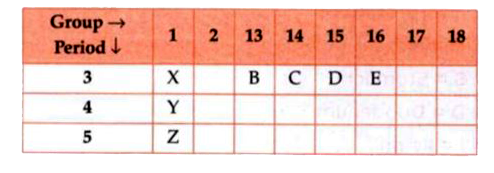Give the electronic configureation and geometrical representation of the following element ? Carbon.
To find the electronic configuration and geometrical representation of the carbon element, we can follow these steps:
Step 1: Identify the Atomic Number of Carbon
The atomic number of carbon (C) is 6. This means that a neutral carbon atom has 6 protons and 6 electrons.
Step 2: Determine the Number of Neutrons
The most common isotope of carbon has a mass number of 12 (6 protons + 6 neutrons). Therefore, carbon has 6 neutrons.
Step 3: Write the Electronic Configuration
The electronic configuration describes how the electrons are distributed in the atom's shells. The first shell (K shell) can hold a maximum of 2 electrons, and the second shell (L shell) can hold a maximum of 8 electrons.
- Fill the K shell first:
- K shell: 2 electrons
- Remaining electrons for the L shell:
- L shell: 4 electrons (since 6 total - 2 in K shell = 4 remaining)
Thus, the electronic configuration of carbon is:
1s22s22p2
This indicates that there are 2 electrons in the 1s orbital, 2 in the 2s orbital, and 2 in the 2p orbital.
Step 4: Create the Geometrical Representation
To represent the carbon atom geometrically:
1. Draw the nucleus, which contains 6 protons and 6 neutrons.
2. Draw the K shell around the nucleus and place 2 electrons in it.
3. Draw the L shell around the K shell and place 4 electrons in it.
Final Representation
- Nucleus: 6 protons and 6 neutrons
- K shell: 2 electrons
- L shell: 4 electrons
Summary
- Electronic Configuration: 1s22s22p2
- Geometrical Representation: A nucleus with 6 protons and 6 neutrons, K shell with 2 electrons, and L shell with 4 electrons.
---
The atomic number of carbon (C) is 6. This means that a neutral carbon atom has 6 protons and 6 electrons.
The most common isotope of carbon has a mass number of 12 (6 protons + 6 neutrons). Therefore, carbon has 6 neutrons.
The electronic configuration describes how the electrons are distributed in the atom's shells. The first shell (K shell) can hold a maximum of 2 electrons, and the second shell (L shell) can hold a maximum of 8 electrons.
- K shell: 2 electrons
- Remaining electrons for the L shell:
- L shell: 4 electrons (since 6 total - 2 in K shell = 4 remaining)
1s22s22p2
This indicates that there are 2 electrons in the 1s orbital, 2 in the 2s orbital, and 2 in the 2p orbital.
To represent the carbon atom geometrically:
1. Draw the nucleus, which contains 6 protons and 6 neutrons.
2. Draw the K shell around the nucleus and place 2 electrons in it.
3. Draw the L shell around the K shell and place 4 electrons in it.
- Nucleus: 6 protons and 6 neutrons
- K shell: 2 electrons
- L shell: 4 electrons
- Electronic Configuration: 1s22s22p2
- Geometrical Representation: A nucleus with 6 protons and 6 neutrons, K shell with 2 electrons, and L shell with 4 electrons.
Similar Questions
Knowledge Check
- Question 1 - Select One

Write electronic configuration of element E.A2,8,3B2,8,6C2,8,5D2,8
Give the electronic configureation and geometrical representation of the following element ? Flourine.
View SolutionGive the electronic configureation and geometrical representation of the following element ? Sodium.
View SolutionGive the electronic configuration and geometricalatomic theory representation of the following elements:
(a) fluorine
(b) sodium
(c) chlorine
(d) carbonView SolutionGive electronic configuration of Ga.
View SolutionElectronic Configuration Of Elements
View SolutionDraw the geometrical representation of sulphur.
View SolutionDraw the geometrical representation of sulphur.
View Solution

